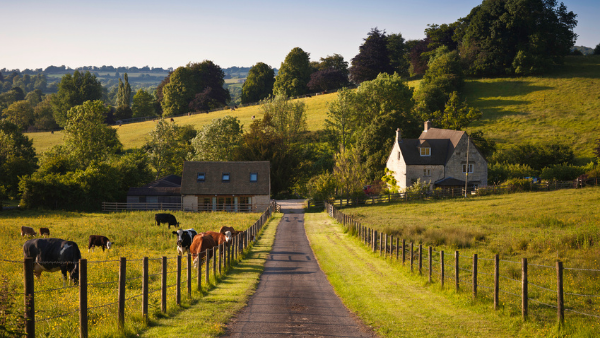Author
Farming families hold land in a variety of different ways, for a variety of different reasons. Tax and succession planning often play a part in the decision making, alongside concerns over control and management. It is common to find that land has been held in a certain way for decades and the structure is rarely reviewed or revised.
New trust registration rules, that take effect from 1 September 2022, mean that the way in which land is owned will need to be reviewed. Trusts caught by the rules will need to be registered.
What arrangements are affected?
The new rules are likely to catch:
(1) land held by individuals for the benefit of themselves and others;
(2) land held by individuals for the benefit of others (and not themselves); and
(3) land held as a partnership asset by some, but not all partners.
These structures, where the legal title of land is held by say A and B, but the beneficial interest is owned by A, B and C, are technically known as co-ownership trusts of land (“Co-ownership Trusts”). They are rarely referred to as such, but when given their proper legal title, it is easier to understand why these sorts of arrangements are now caught by rules designed to allow HMRC to have greater visibility of trusts.
The rules requiring the registration of trusts go beyond simply Co-ownership Trusts and extend to bare trusts, express trusts and nominee arrangements. We will be producing a separate article covering these entities and the obligations on trustees in these circumstances. This article only deals with the requirements for non-taxable UK Co-ownership Trusts.
Co-ownership Trusts
If a Co-ownership Trust (as described above) is in existence before 4 June 2022, the Trust has to be registered with the Trust Registration Service (TRS) by 1 September 2022.
If a Co-ownership Trust is created after 4 June 2022 (because land is purchased in one of the structures described above, or there has been a change in the trust’s information, for example the beneficiaries or trustees change following a transfer, gift or death) then registration must be completed within 90 days of the creation or change.
Trustees’ obligations
The obligations on trustees of a Co-ownership Trust are:
• to register the trust with the TRS by the relevant deadline;
• to ensure the TRS record is updated within 90 days of the date the trustees become aware of any change to the registered details.
The TRS requires the trustees to submit all the relevant details of the Co-Ownership Trust, including the names and addresses of the legal and beneficial owners and an estimated value of the land, that is the subject of the trust as at the date of registration.
HMRC can impose penalties and fines on trustees for non-compliance. Our Trusts team can assist with registration with the TRS.
Are there any exclusions?
The only Co-ownership Trusts not caught by the registration requirements are where:
• land is held by individuals for the benefit of themselves and no one else. For example, where A and B hold the legal title and also the beneficial interest. It does not matter whether they are joint tenants or tenants in common; there is no requirement to register with the TRS. This would also be the case if the land is a partnership asset and the only partners are A and B.
• land is owned by two or more people and one of them is under 18. For example, where a father transfers the legal and beneficial interest to his three children and one of them is a minor.
• the beneficial interest in land is owned by more than 5 people, but only 4 of them hold the legal title. The Land Registry will only permit the names of 4 individuals to appear on the legal title.
As soon as any changes are made to these ownership structures, such as adding new partners to a partnership, or following transfers or gifts, it is likely that the exclusion will no longer apply, and the Co-Ownership Trust will have to be registered within 90 days of that change.
Farming structures
Given the requirement to register by 1 September 2022, landowners and partnerships will need to review how land is owned and who benefits from it. Any Co-ownership Trusts as listed in (1) – (3) above will need to be registered and the register maintained, regardless of how long the ownership structure has already been in place.
When purchasing land in the future, the requirement to register and maintain the register will now be one of the factors to consider when contemplating how to structure the ownership of the land.
It is important to note that different parcels of land, acquired at different times are likely to be treated as separate Co-Ownership Trusts, requiring separate registration with the TRS. This is regardless of the fact that they may have been farmed together by the same farming business for decades. However, if two parcels of land are bought at the same time but are held under separate title numbers at H M Land Registry, then whether that results in two separate TRS registrations or just one will depend on how many declarations of trust have been made.
These requirements add an additional layer of complexity and administration. However, they also present an opportunity. Businesses and individuals should be encouraged to review how they own land and to consider whether they wish to continue the same arrangements for the future. Regulation forces change and brings with it the necessity to take stock and plan for the long term. What has worked in the past may not be the best fit for the future.
For further information contact Vivienne Williams.

